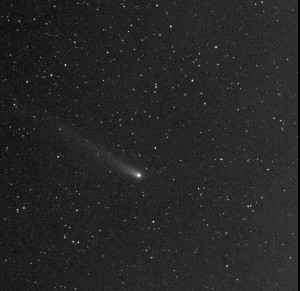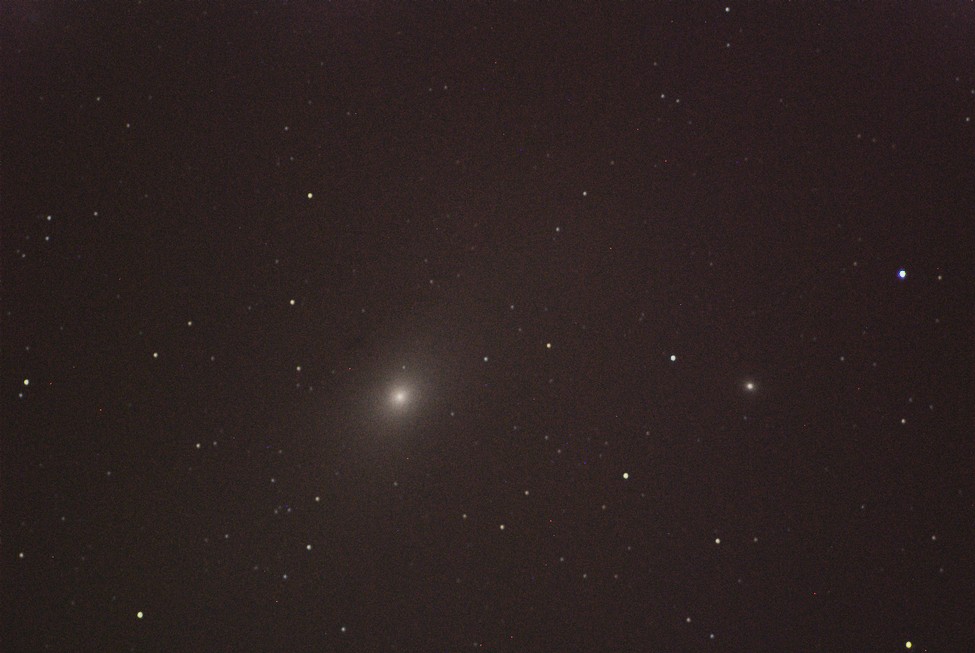Comet Lovejoy (Designation C2013\R1) was discovered in September 2013 by observer Terry Lovejoy in Australia. This comet is expected to reach peak brightness this week around +4 magnitude (in a good estimate for what's visible is about +6 magnitude), the lower the magnitude the brighter the object (kinda like golf, the lower the score, the better!).
Below is the image that I was able to take with use of the BTR (Cluster Camera) a Nikon 200mm lens.
The comet will be visible in the morning skies and will be moving quickly towards the Sun and then out of the solar system. This comet has a 7000 year orbit so I don't think we'll be seeing it back around these parts anytime soon so look while you can!
The key to seeing this comet will be early morning observing. I recommend a visit to the following site (http://theskylive.com/ephemerides-computation?obj=lovejoy) if you want to try and catch it. This website provides tracking of the current position of the comet against the stars so you can get an accurate idea of where to look. Given how dim this comet is, you'll probably want to have a pair of binoculars or a small telescope for easy viewing.
Happy comet watching!

